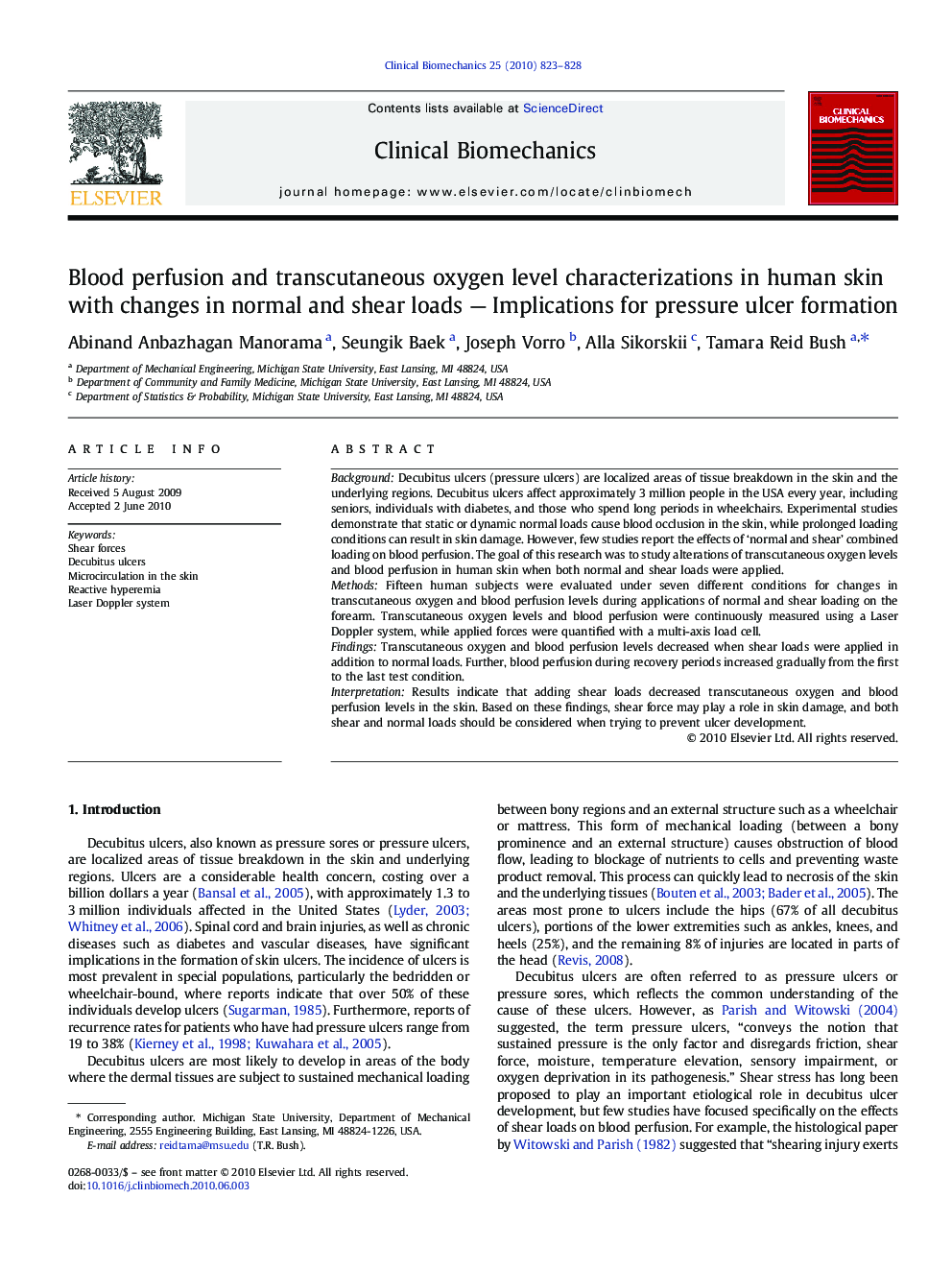| Article ID | Journal | Published Year | Pages | File Type |
|---|---|---|---|---|
| 4050603 | Clinical Biomechanics | 2010 | 6 Pages |
BackgroundDecubitus ulcers (pressure ulcers) are localized areas of tissue breakdown in the skin and the underlying regions. Decubitus ulcers affect approximately 3 million people in the USA every year, including seniors, individuals with diabetes, and those who spend long periods in wheelchairs. Experimental studies demonstrate that static or dynamic normal loads cause blood occlusion in the skin, while prolonged loading conditions can result in skin damage. However, few studies report the effects of ‘normal and shear’ combined loading on blood perfusion. The goal of this research was to study alterations of transcutaneous oxygen levels and blood perfusion in human skin when both normal and shear loads were applied.MethodsFifteen human subjects were evaluated under seven different conditions for changes in transcutaneous oxygen and blood perfusion levels during applications of normal and shear loading on the forearm. Transcutaneous oxygen levels and blood perfusion were continuously measured using a Laser Doppler system, while applied forces were quantified with a multi-axis load cell.FindingsTranscutaneous oxygen and blood perfusion levels decreased when shear loads were applied in addition to normal loads. Further, blood perfusion during recovery periods increased gradually from the first to the last test condition.InterpretationResults indicate that adding shear loads decreased transcutaneous oxygen and blood perfusion levels in the skin. Based on these findings, shear force may play a role in skin damage, and both shear and normal loads should be considered when trying to prevent ulcer development.
